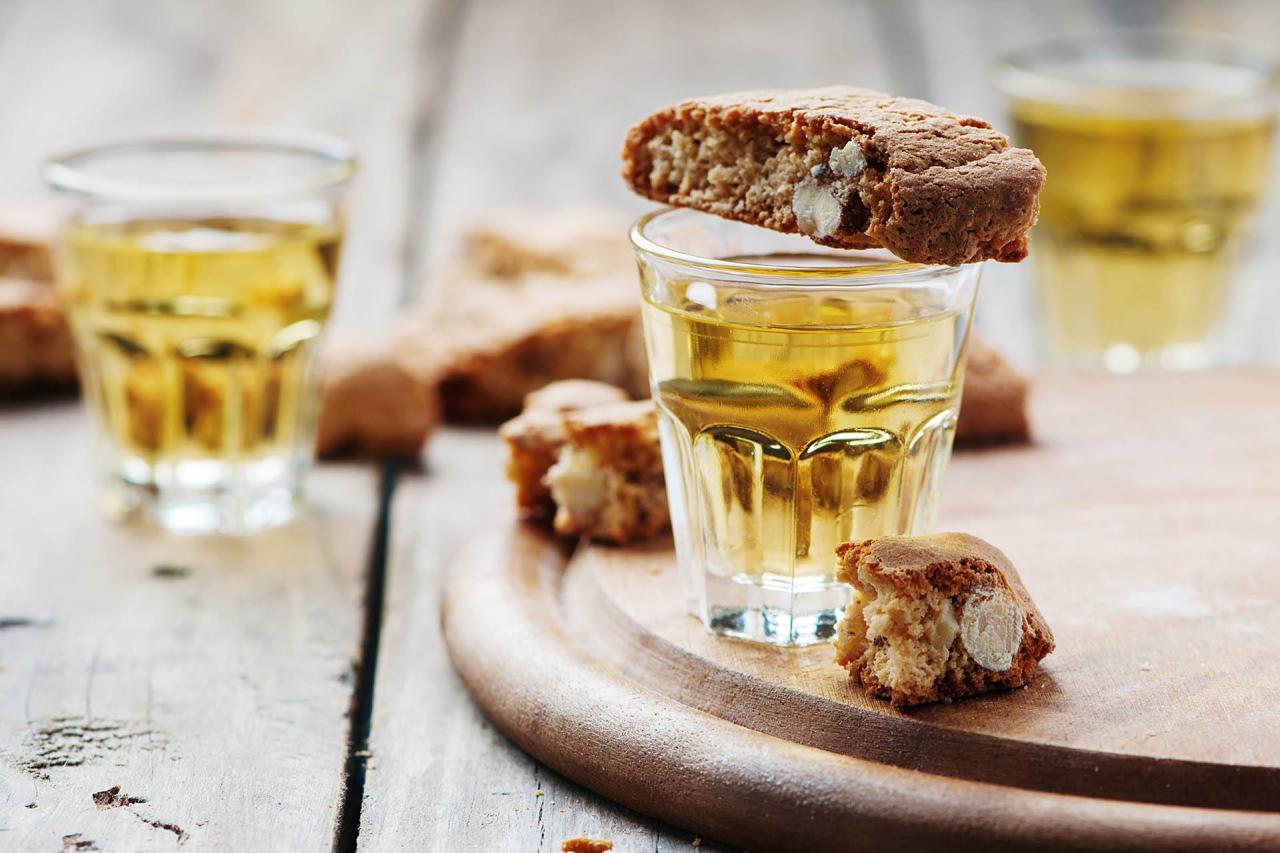And if sweet wines are often underestimated and considered hard to match with food, actually the wide range of dessert wines produced in Italy offers plenty of versatility and fun pairings that go way off the classic desserts.
Indeed sweet wines are great companions to cheese and meat patés, especially foie gras, but they can also be drunk as an aperitif and accompany some finger foods. Some Italian dessert wines are even perfect with brunch. And sometimes, after a big meal and having had too much food, a glass of sweet wine can be a delicious alternative to dessert!
So, if you want to find out a bit more about them, here is a good list of the Italian sweet wines that are worth taking note of.
Passito
Passito comes from the Italian word “appassimento,” which directly translates to “withering”. Essentially, Passito is an Italian sweet wine that they make by drying grapes. The sweetness accumulates during this drying process since all the water evaporates, leaving heavily concentrated grapes with high sugar content. Traditionally, this is done by allowing partial drying on the vines, where after the grapes are laid out in the sun to dry further.
The modern techniques vary slightly, where winemakers harvest the grapes just before ripeness to ensure the acidity levels are relatively high. When drying the grapes, some winemakers still use sun-drying methods, but most winemakers prefer to dry them indoors with ventilation. Depending on the style of wine the winemakers are opting for, the drying process can range from a few weeks to six months. What follows is the fermentation process and bottling stage.
The sugar and concentration of this Italian sweet wine make it ideal for enjoying after a meal since it is often too sweet for food pairing.
Get updates on the latest posts and more from Wine Bugle straight to your inbox.
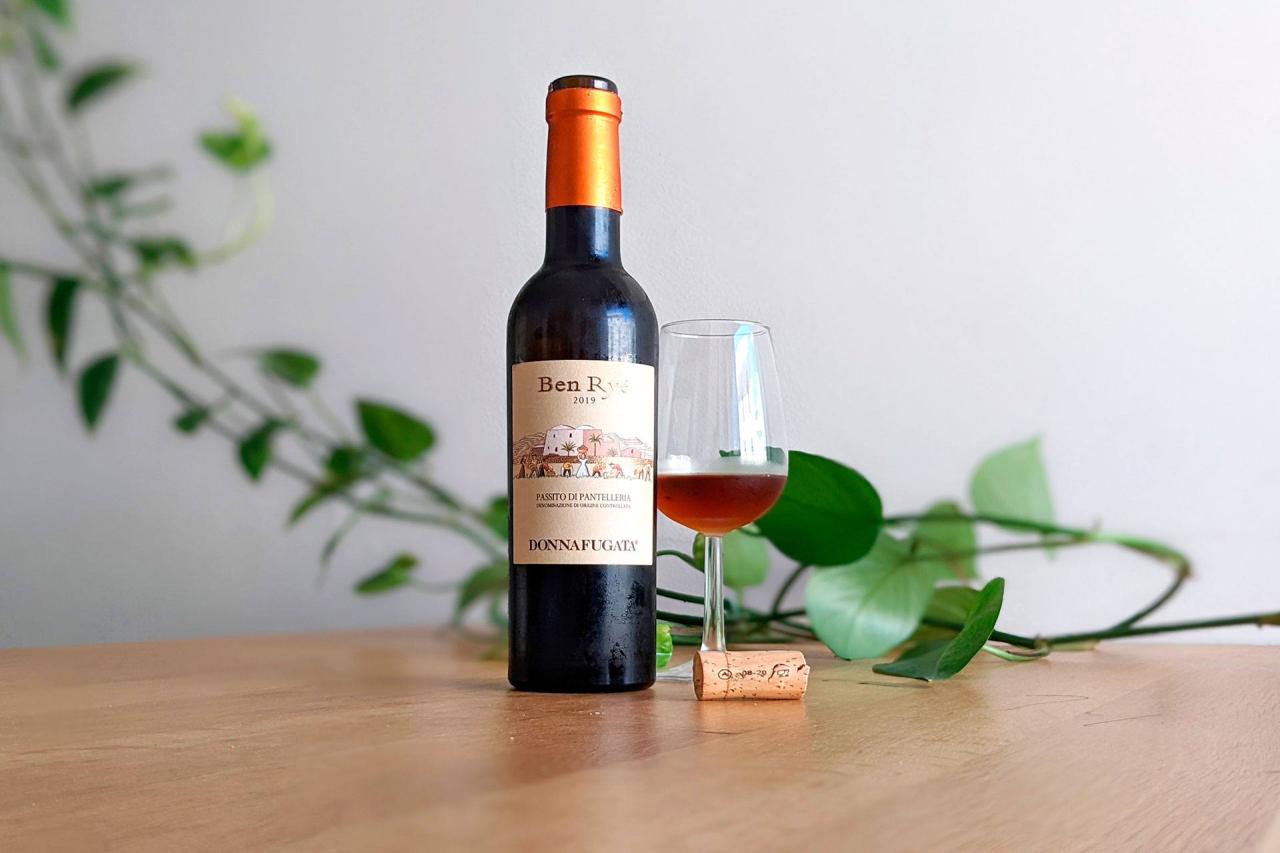
Passito di Pantelleria
Passito di Pantelleria is a style of Italian sweet wine that they make solely in the Pantelleria DOC of Sicily. The only grape variety they use to make this style of wine is Zibibbo (Moscato d'Alessandria). The wines are golden yellow and highly fragrant with aromas of dried apricots and dates.
Our suggestion: Ben Ryé, Donnafugata
The Ben Ryé of Donnafugata winery is the quintessence of Passito di Pantelleria and it’s some of the best dessert wine Italy can produce. It is characterized by a very intense bouquet in which aromas of raisins, dried apricots, and candied orange peels stand out, followed by delicate herbaceous and floral notes reminiscent of the Mediterranean scrub. It is extraordinarily elegant and complex, and its sweetness is perfectly balanced by freshness. Pair it with Sicilian pastry desserts or enjoy it on its own after a meal.
Sciacchetrà
The grapes used to make this iconic Italian sweet wine come from the Cinque Terre hills in Liguria. Unlike Passito di Pantelleria, winemakers have the choice of several grapes to make the wine. However, 40% of the blend must be from Bosco, and another 40% must consist of Albarola or Vermentino. The aromas range from honey to white blossoms and citrus.
Our suggestion: Cinque Terre Sciacchetrà, Sassarini
The Sciacchetrà from the Sassarini winery has an amber color with iridescent reflections. The nose reveals intense hints of apricot, candied citrus, and dried medicinal herbs. On the palate, it is sweet and silky with a strong and bewitching structure and an aftertaste of almond and dried figs. Try it with apricot tart.
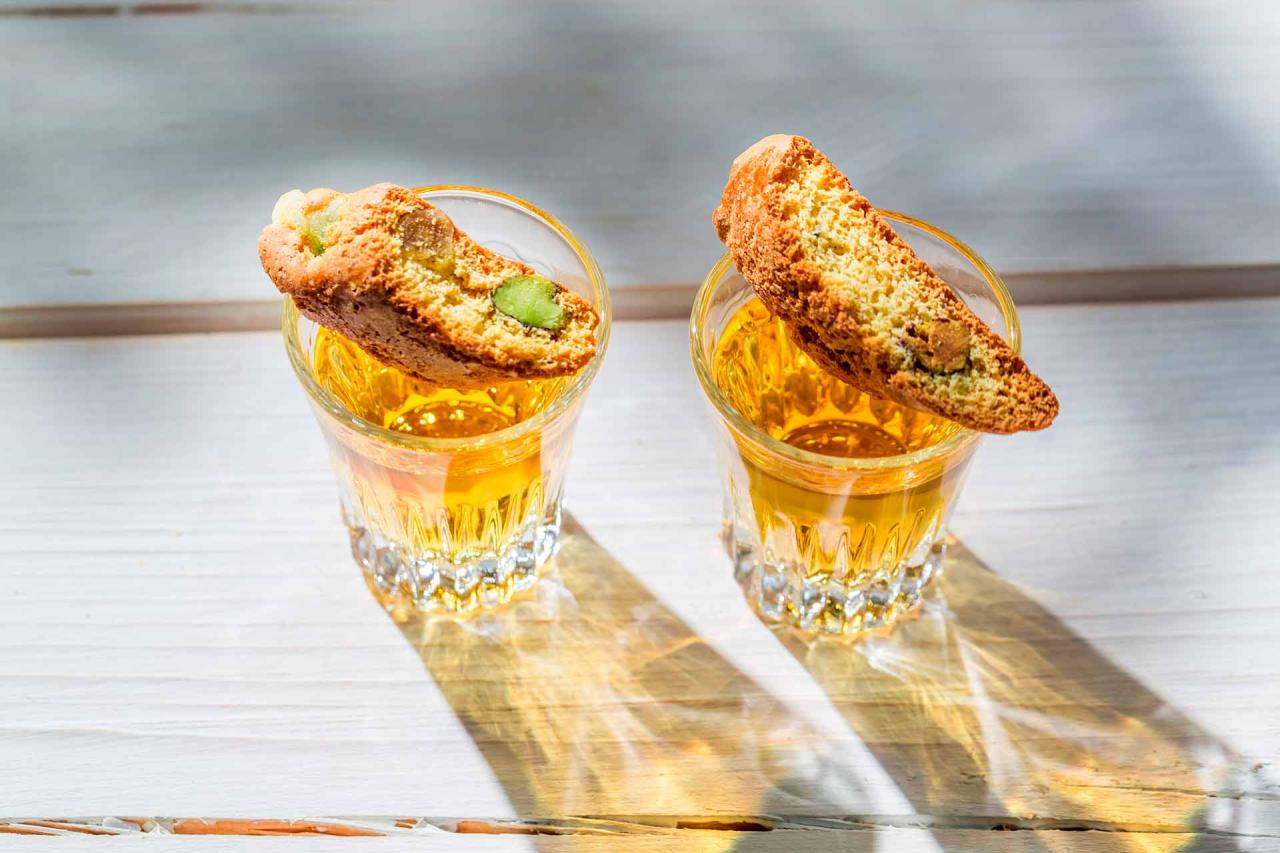
Vin Santo
Vin Santo, which directly translates to “Holy Wine,” is primarily made from grapes grown in several areas of Tuscany, including Chianti and Montepulciano. Like its fellow Passito wines, Vin Santo is dried and fermented with high sugar levels. Vin Santo’s aromas range from hazelnut and caramel to honey, apricot, and perfume. As with Sciacchetrà, more than one grape is permitted to make the wine. In this case, it is a blend of Trebbiano and Malvasia.
Our suggestion: Vin Santo Felsina
The dried grapes harvested in the vineyards of Felsina produce a complex Italian dessert wine Vin Santo, with intense aromas of honeysuckle, caramel, peaches, and brioche. The long drying process creates a great concentration of flavors that include tropical fruit and notes of honey and toasted almonds. The sweetness is intense but well-balanced. A must with the typical Tuscan Cantucci biscuits.
Recioto
Regarded as the father of Amarone, Recioto Della Valpolicella is an Italian sweet red wine produced exclusively in the territories of Valpolicella and made with the indigenous grapes Corvina, Rondinella, Corvinone, Oseleta and Negrara. The grapes are naturally dried in specially ventilated rooms, as for the Amarone but, for Recioto, the fermentation is interrupted before all sugars are converted into alcohol, thus obtaining a sweet wine. The Recioto di Soave, made in the Soave wine area, is the white version.
Our suggestion: Recioto della Valpolicella Classico DOC “Giovanni Allegrini”, Allegrini
Recioto Della Valpolicella from Allegrini is a very elegant wine, capable of a slow evolution in the bottle. It shows fruity and floral notes, balsamic and licorice hints, coffee, and chocolate. It is sweet but characterized by a fresh acid note that gives great drinkability. The ideal wine for an after-dinner without dessert or for pairing with chocolate.
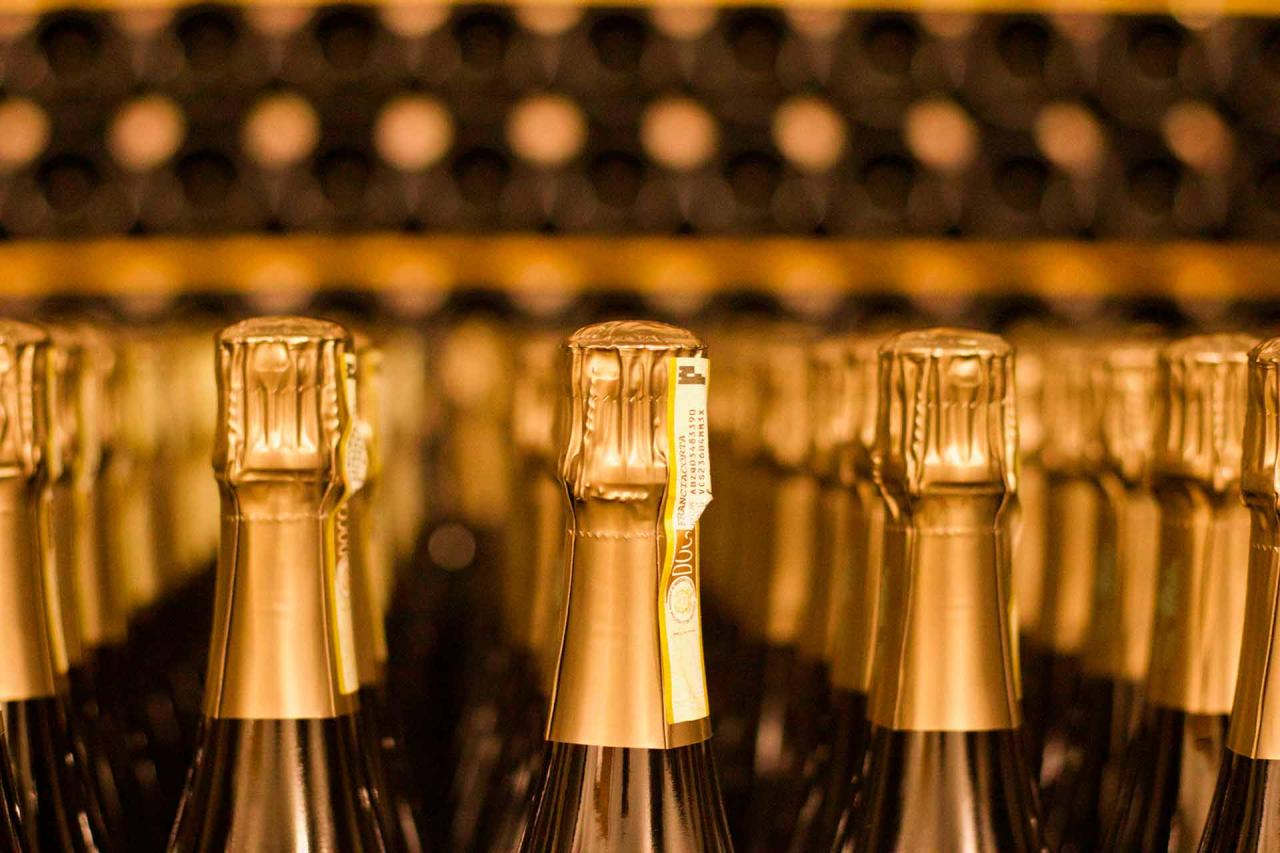
Sweet Sparkling Wine
While Prosecco is arguably Italy’s most renowned sparkling wine, several other essential wines are worth noting, especially in the sweeter categories.
The four types of sparkling wines that Italy makes include Prosecco, Franciacorta, Asti Spumante, and Lambrusco. While not all of them are always sweet, winemakers have the option to make a sweet style.
Their sweetness will depend on the level of residual sugar. When this is between 32 and 50 gr, the wine will be labeled as Demi-Sec or Medium-Dry and can be considered a dessert wine.
Asti Spumante
Spumante is an Italian term that essentially means “fizzy.” These sparkling wines are not as effervescent as traditional sparkling wine but offer an equally memorable experience. Made using Moscato, the wines are intense, particularly with aromas of honeysuckle, pear, and citrus.
Our suggestion: Fontanafredda Asti Spumante Dolce
The Asti Spumante Dolce from Fontanafredda is characterized by an immediate fragrance, and moderate alcohol content. The scent is floral, with hints of orange blossom, lime, and acacia, while the flavor is both acidulous and delicately aromatic. Having a moderate alcohol content, it is suitable for accompanying fruit salads and perfect for brunch.
Prosecco
Prosecco is from Veneto, using solely the native white grape, Glera. It is incredibly aromatic and best enjoyed in its first few years. To make Prosecco, winemakers use the Charmat method, where both the fermentation processes are done inside a steel tank, adding to the vibrancy and aromas of the wine.
Our suggestion: Valdobbiadene Prosecco Superiore Demi Sec DOCG "Suavis", Bortolomiol
Provided with good residual sugar, this Prosecco has the aromatic intensity typical of the Glera grape and reveals notes of apple, pear, honey, and white flowers. Its sweetness is beautifully enlivened by a remarkable freshness. It is the perfect wine for apple and custard pie.
Lambrusco
Lambrusco is a sparkling red wine made in Emilia-Romagna using the Lambrusco grape. When making the wine, winemakers have the option to use several winemaking processes, one of which is the Charmat method (as with Prosecco). Alternatively, the locals use the méthode Champenoise method, mimicking the Champagne style.
Our suggestion: Lambrusco Grasparossa di Castelvetro DOC Amabile, Righi
The Lambrusco Grasparossa Amabile from the Righi winery is a lively wine with a persistent perlage. It is intensely fruity with notes of black cherry, blackberry, and almond. The residual sugar enhances its characteristics on the palate. Perfect with cherry pie.
Franciacorta
Franciacorta is from Lombardy and the locals use Pinot Noir, Chardonnay, and Pinot Bianco. As with traditional Champagne, they use the traditional winemaking method, which means the second fermentation occurs inside the bottle. The wine has incredible apricot, citrus, and nut aromas, whether made in a sweet or dry style.
Our suggestion: Franciacorta Demi Sec DOCG "Nectar", Bellavista
This Franciacorta Demi-Sec is made from chardonnay grapes selected from thirty different vineyards. The grapes are slightly withered on the plant to concentrate the sugars. Fermentation takes place in small oak barrels, and then the wine rests for at least four years. Try it with ricotta-based desserts.
Sweet Fortified Wines
Italian sweet wines come in many forms, and fortified wines are an equally important element. Essentially, fortified wine has the addition of a spirit (most commonly Brandy), which increases the alcohol level and stops the fermentation process of the wine.
Marsala
Marsala is an iconic Italian fortified wine from Sicily using local grapes, mainly Grillo. The wine can be made both dry and sweet, with intense cherry, apple, and dried fruit aromas.
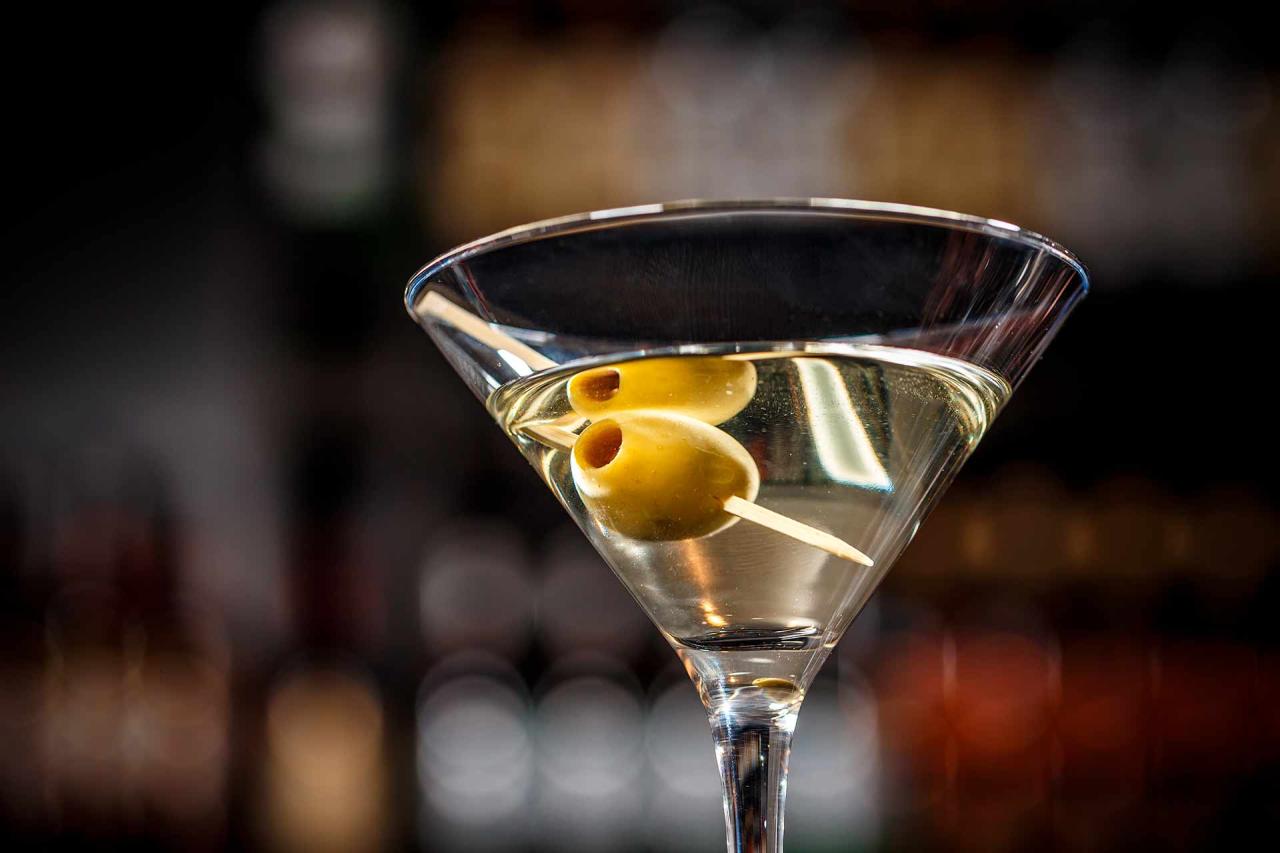
Martini Rosso & Bianco
Martini Rosso and Martini Bianco are two other famous Italian fortified wines. Both these are Italian-style vermouths, which infuse plants and flowers. These fortified wines have distinct aromatics, especially herbal notes from the infused elements. These are most commonly used for classic cocktails, especially Negroni.
Barolo Chinato
Barolo Chinato is the finest flavored wine in Italy, prepared with a process similar to that of classic vermouth. The starting point is Barolo wine, to which sugar and alcohol are added, and then spices, herbs, and medicinal roots. The result is a complex sweet wine where the typical aromas of Nebbiolo blend with balsamic, spicy, and vanilla notes. Excellent with chocolate.
Photo "Sweet sparkling wine" by paola capelletto on Unsplash

